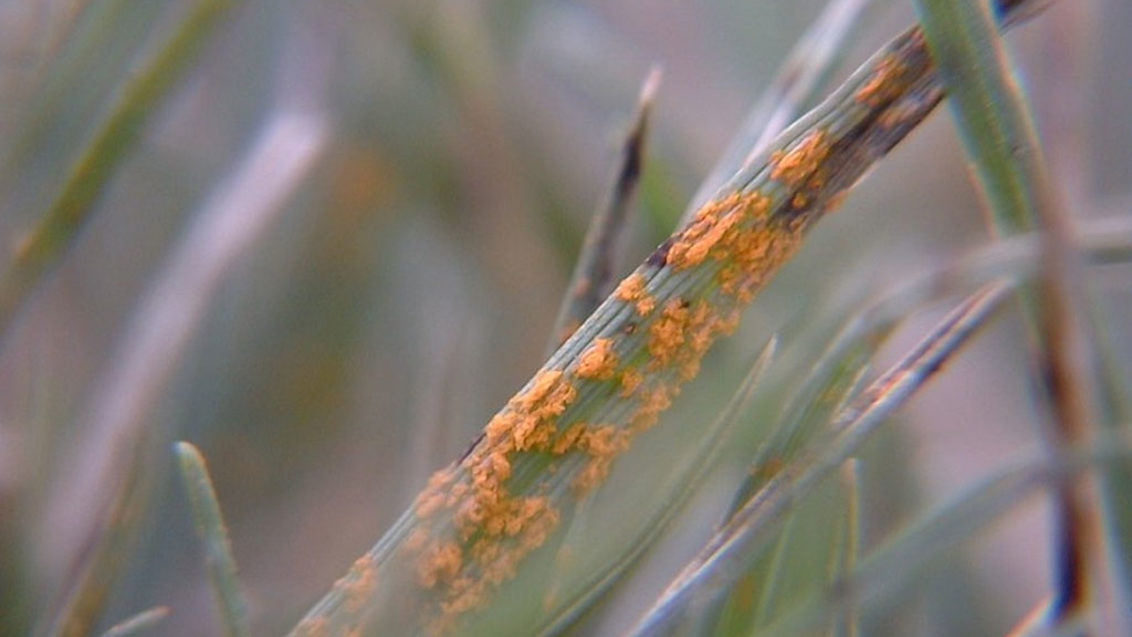Rusts
Puccinnia & Uromyces species
Disease of Foliage
Susceptible Turf
All cool season turfgrass species.
Symptoms
- Early symptoms of Rust diseases appear as light-yellow flecks on leaves or stems.
- The flecks enlarge, elongate, and turn yellow in colour.
- The yellowed area of the infected spots enlarge and elongate parallel to the leaf or stem axis as the infection matures.
- The leaf blade turns yellow starting at the tip and progressing to the base.
- The infected areas rise above the epidermis and then rupture, releasing spores that are yellowish-orange to reddish-brown in colour.
- Severe disease infection causes the shoot to turn yellowish to reddish-brown and slows growth.
- As individual plants die, the turf thins.
Conditions Favouring Disease
- Rust diseases typically occur in early spring through mid-summer.
- Rusts favour moist, low-light areas.
- Leaf wetness is required for fungal growth.
- Depending on the species, Rusts favour temperatures between 18°C and 30°C.
- Severe rust infections occur on slow-growing turfgrass particularly those with low nitrogen levels and/or water stress.
Management Tips
- Convert to a turfgrass seed blend that is resistant to rust diseases found in the area.
- Apply adequate levels of nitrogen and other nutrients
- Remove clippings from turf.
- Reduce shade and improve air circulation.
- Regulate irrigation to minimise the amount of time moisture remains on the leaf surface.
- Water deeply and infrequently.
General Comments
Grasses growing under stressful environmental conditions are most easily parasitised by the Rust fungi.

